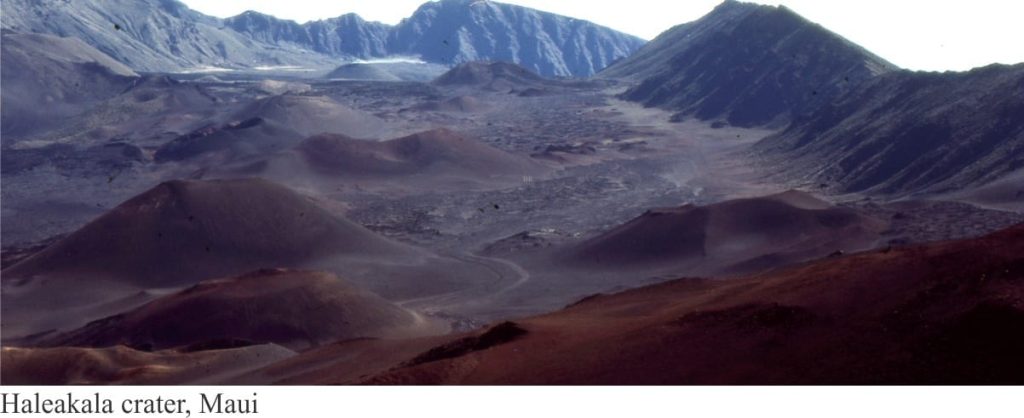
A look at reworked volcaniclastics in outcrop
This is part of the How To… series on describing rocks that in this post focuses on reworked, or Secondary Volcaniclastics in outcrop. Although the series focuses on sediments and sedimentary rocks, I have added these posts on volcanics because of their importance to sedimentary basin dynamics and basin stratigraphy.
Volcaniclastic deposits consist of fragmented volcanic rock. The definition and classification of volcaniclastics has been debated for several decades. Some earlier schemes used inferred mode of clast-fragment formation during an eruption as the starting point for classification, for example R.V. Fisher’s iconic publications (1961, 1966). A more recent scheme suggested by White and Houghton (2006) defines two fundamental types of deposit based on the mechanisms of transport and modes of deposition; this scheme is widely used today:
- Primary Volcaniclastics formed of fragmented rock and magma and deposited during an eruption, and
- Secondary Volcaniclastics consist of primary volcaniclastics reworked by mass transport (sediment gravity flows) or bedload and suspension transport in flowing water.
Fragmentation takes place as magma exits a vent. Common eruption processes include:
- Autobrecciation of lava flows during cooling,
- Fire fountains where magma is fragmented into lapilli and a variety of other ballistics,
- Explosive eruptions caused by rapid gas expansion (magmatic), or contact between the magma and shallow aquifers where freshwater or seawater flashes to superheated steam, blasting the magma apart (phreatomagmatic). These eruptions frequently produce towering columns of ash and water vapour that deposit airfall ash, and ground-hugging pyroclastic flows.
- Fragmentation caused by rapid quenching and thermal shock when lava flows into the sea or a lake (this process can also take place beneath glaciers and ice sheets).
Primary volcaniclastics produced by these eruption processes may remain undisturbed, or subjected to erosion, reworking, and abrasion by normal sedimentary processes; these fragmentals now move to the secondary volcaniclastic category. This includes fluvial and marine processes, and transport en masse by sediment gravity flows and debris avalanches. Common products include lahars that have in some cases proven to be as disastrous as the original eruption from which the redeposited material was derived. Check out this post on one such disaster in 1953. Lahars are highly mobile, subaerial mudflows that can be generated during or long after an eruption. Their subaqueous equivalents, debris flows and turbidites, may also develop on the submerged flanks of volcanoes. An event in 2007 on the flanks of Ruapehu (NZ) was monitored closely.
The images presented here are divided into subaqueous and subaerial deposits. The basic sedimentology of secondary volcaniclastics is similar, if not identical to ‘normal’ terrigenous clastic sediments. This includes cohesionless bedload transport, and mass transport of viscous sediment water mixes that behave rheologically as plastic or pseudoplastic debris flows and hyperconcentrated flows.
The first diagram encapsulates the essence of White and Houghton’s classification scheme. The second shows the rheological distinction among different flow behaviours.
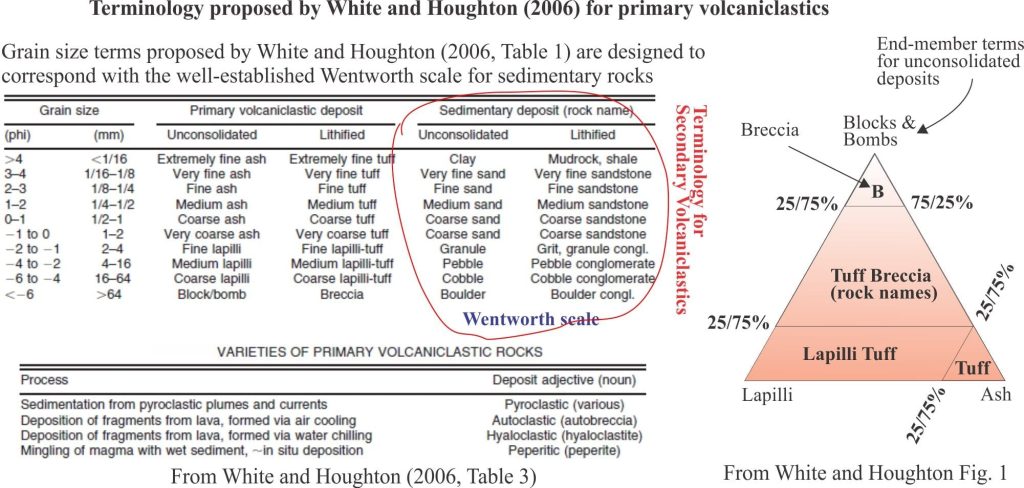
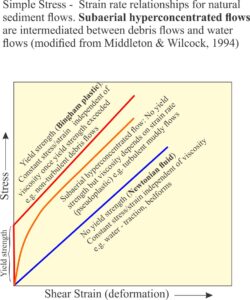
Additional photos of volcanic rocks and volcaniclastic facies are gathered in the Atlas of Volcanoes and Volcanic Rocks.
Related links in this series on outcrop descriptions
Volcanics in outcrop: Pyroclastic density currents
Volcanics in outcrop: Pyroclastic fall deposits
Mount St. Helens: 40th Anniversary
Volcanics in outcrop: Lava flows
Sedimentary structures: Alluvial fans
Sedimentary structures: coarse-grained fluvial
Sedimentary structures: fine-grained fluvial
Sedimentary structures: Mass Transport Deposits
Sedimentary structures: Turbidites
Sedimentary structures: Shallow marine
Sedimentary structures: Stromatolites
Other useful links
Sediment transport: Bedload and suspension load
The hydraulics of sedimentation: Flow regime
Fluid flow: Froude and Reynolds numbers
Describing sedimentary rocks; some basics
Measuring a stratigraphic section
Subaerial deposits
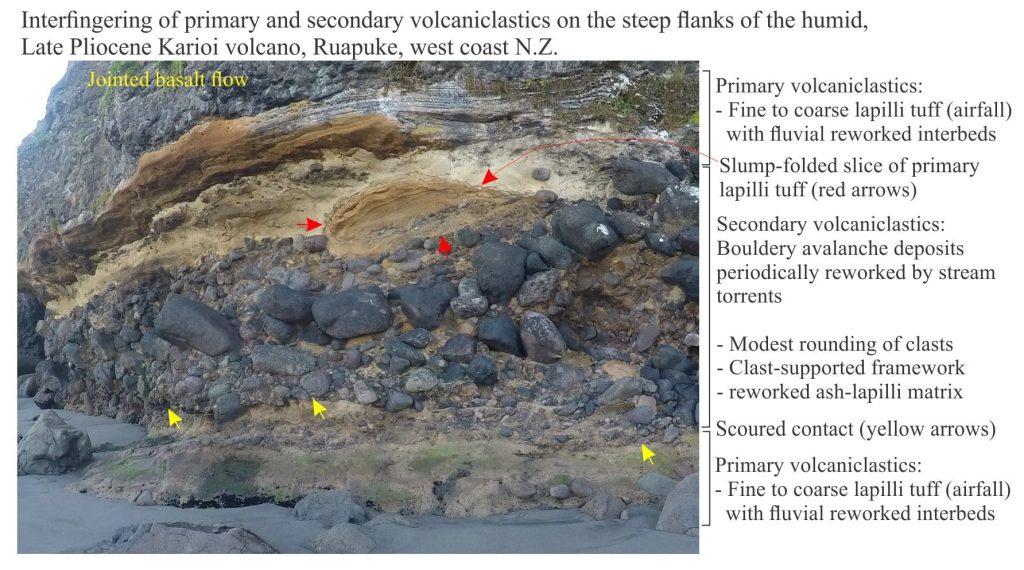
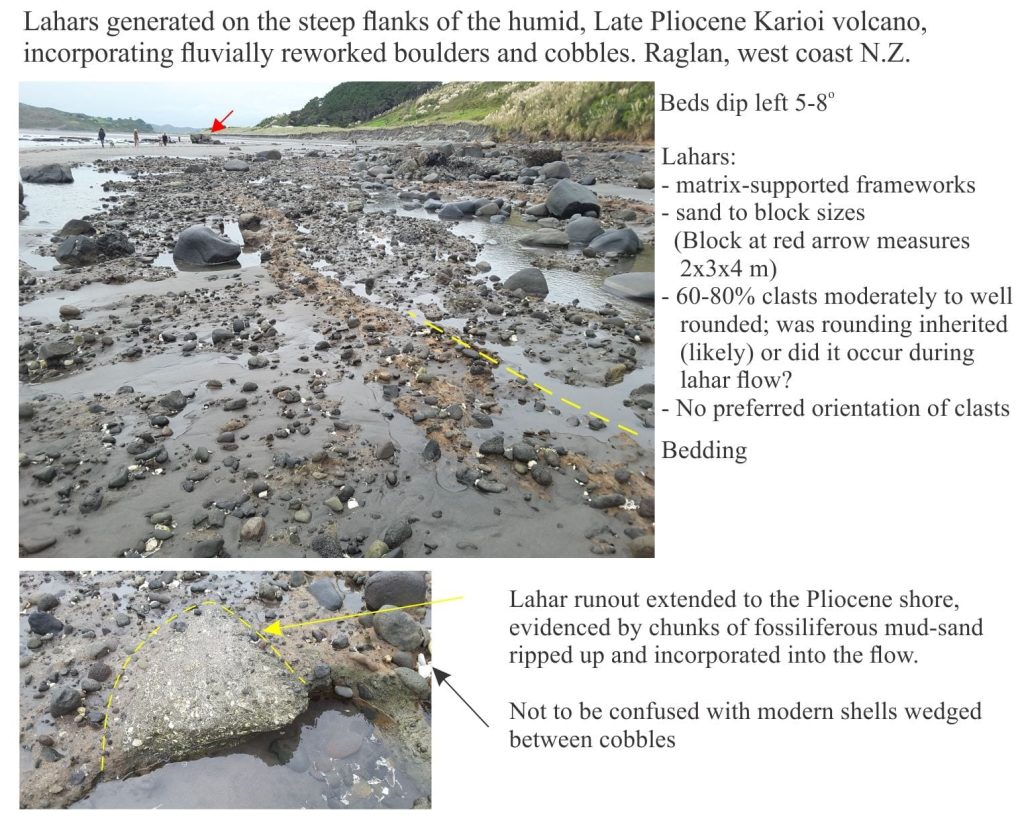
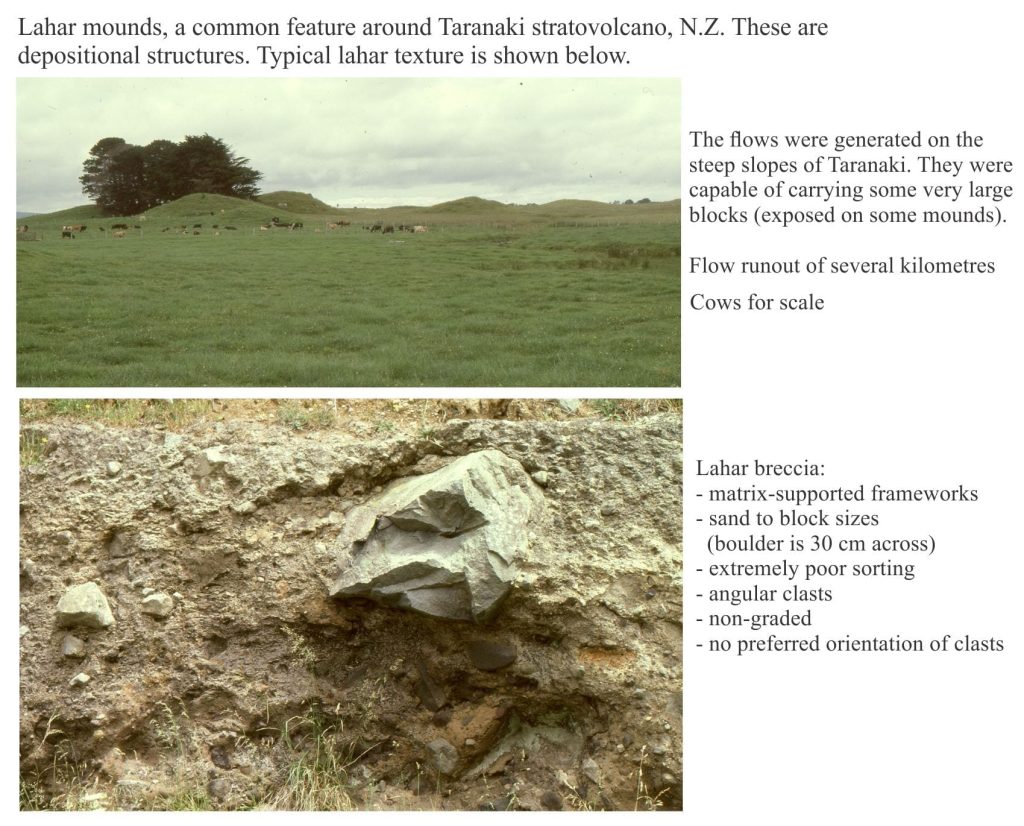
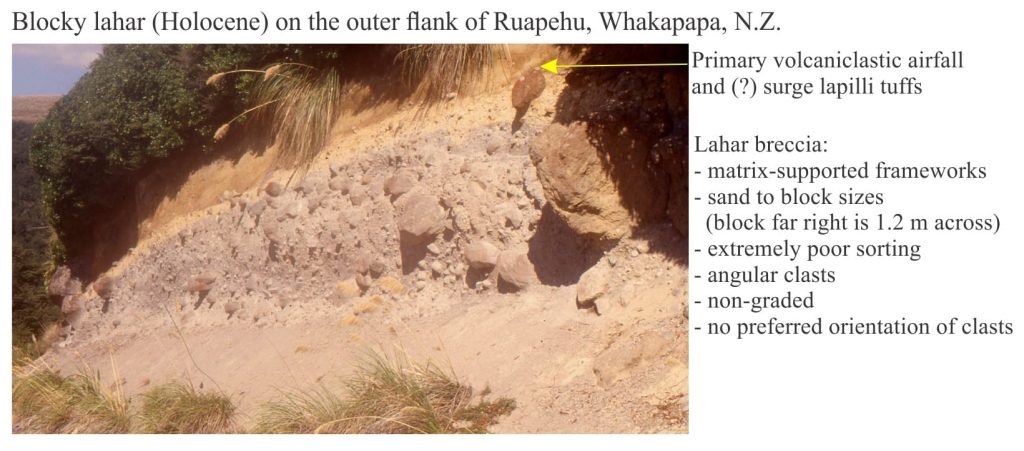
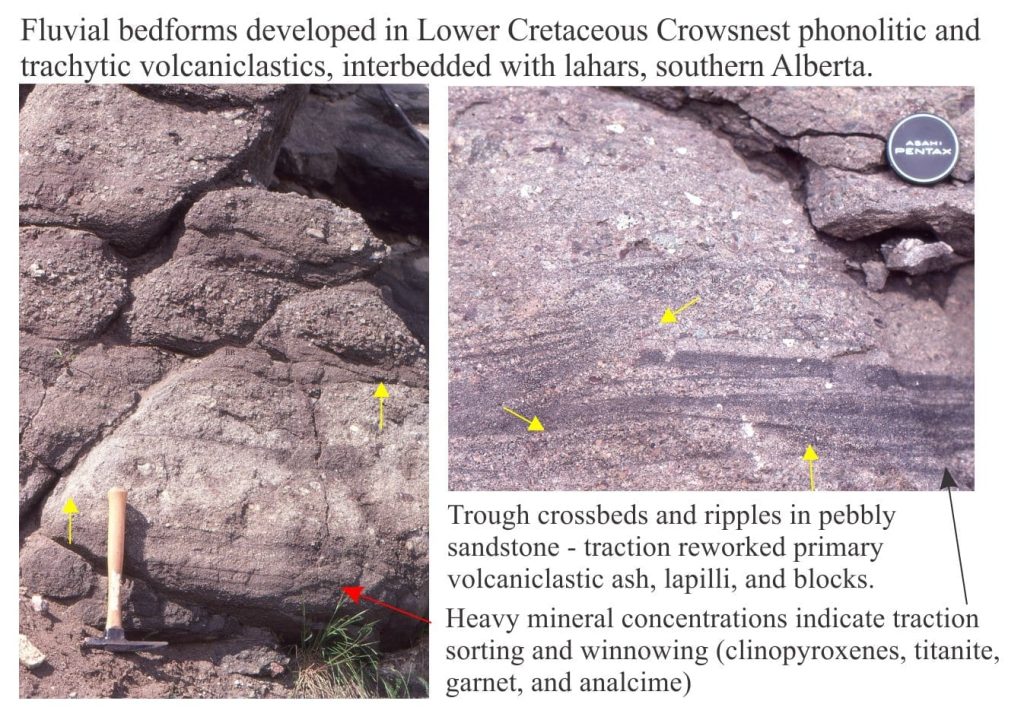
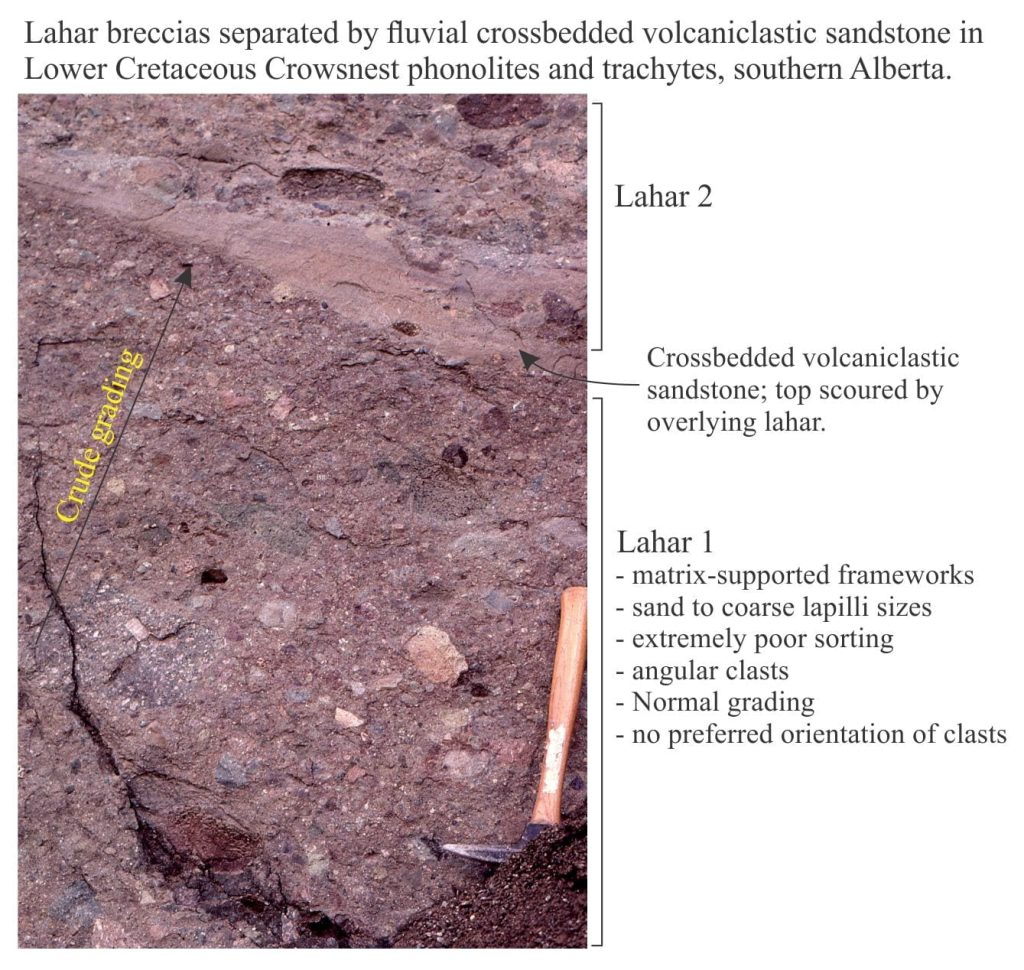
Subaqueous deposits
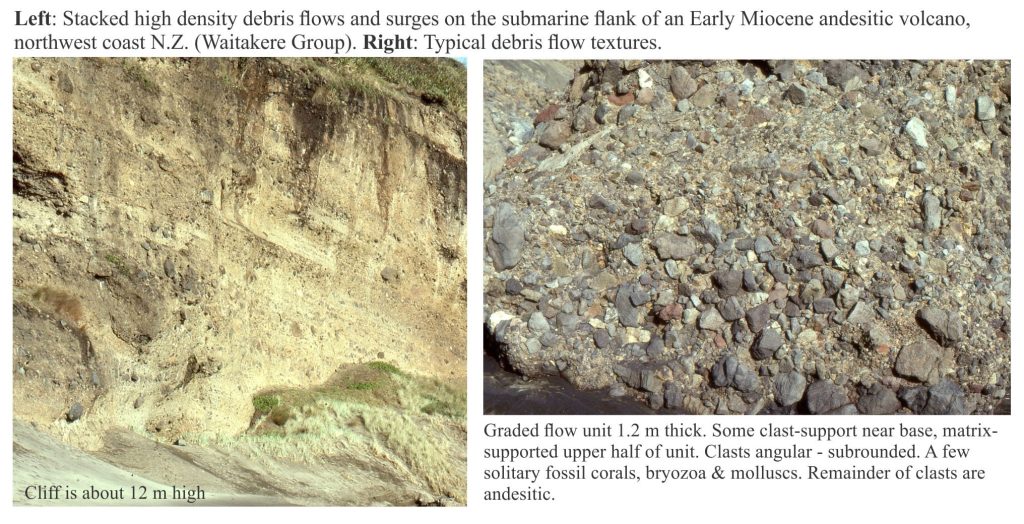
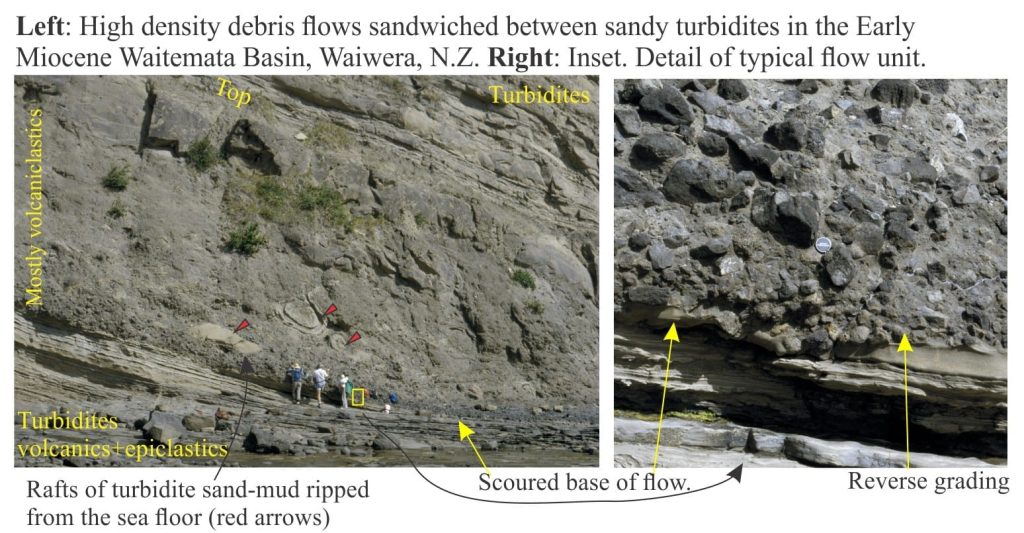
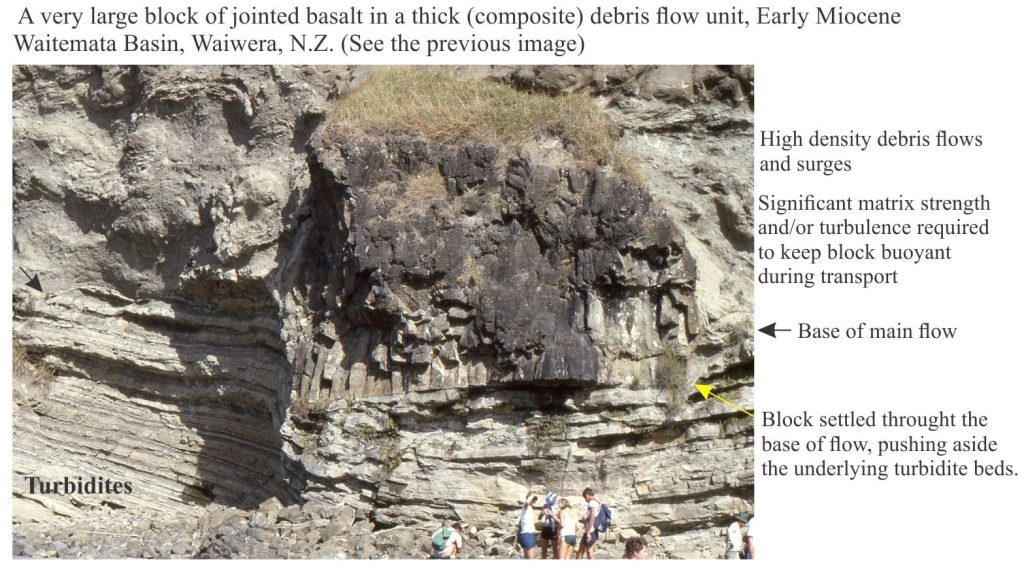
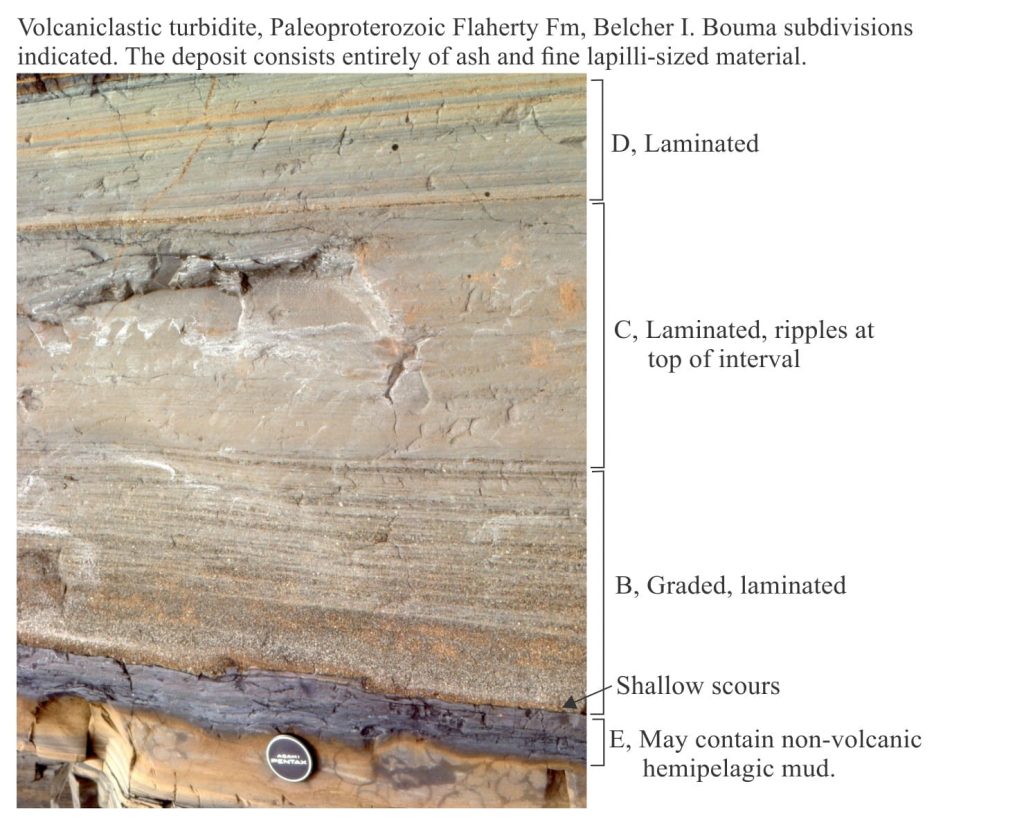
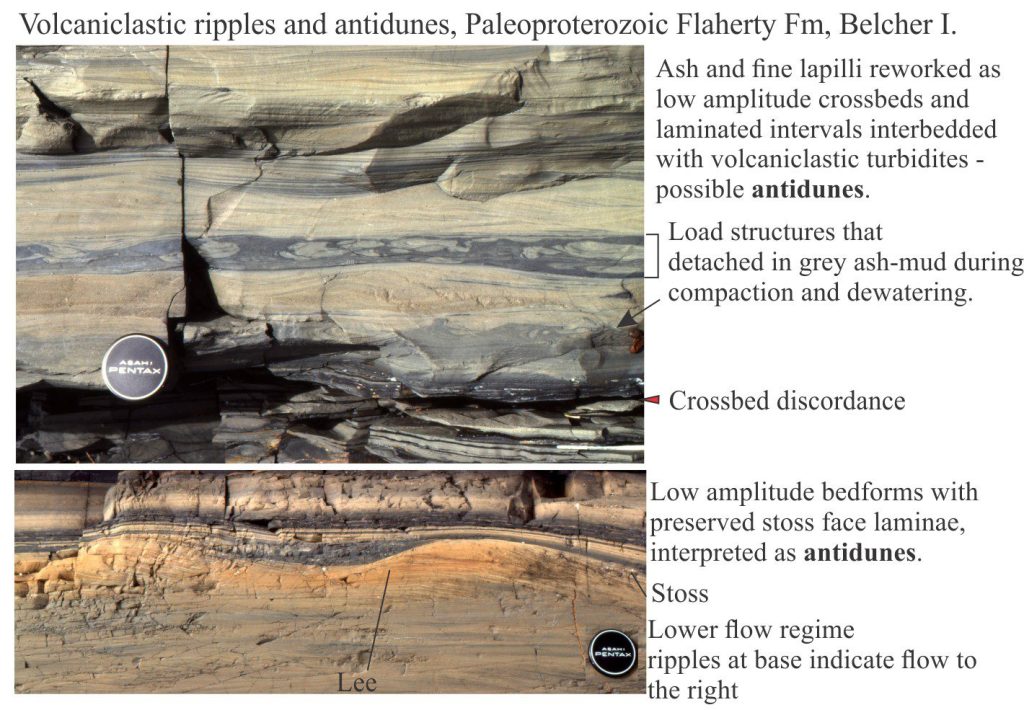
References
R.V. Fisher, 1961. Proposed classification of volcaniclastic sediments and rocks. Geological Society of America Bulletin, v. 72, p. 1409-1414.
R.V. Fisher, 1966. Rocks composed of volcanic fragments and their classification. Earth Science Reviews, v. 1, p. 287-298. Both papers by Fisher are classics on the subject.
R.V. Fisher, 1984. Submarine volcaniclastic rocks. Geological Society, London, Special Publications, 16, 5-27
C. Sohn & Y. K. Sohn, 2019. Distinguishing between primary and secondary volcaniclastic deposits. Nature, Scientific Reports volume 9, Article number: 12425 Open Access. A discussion and addition to the White & Houghton classification.
J.D.L White and B.F. Houghton, 2006. Primary volcaniclastic rocks. Geology, vol. 34, Issue 8.

















